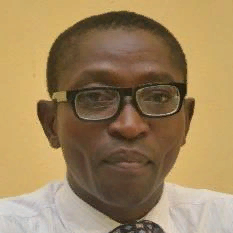
Michael David
Work place: Department of Telecommunication Engineering, Federal University of Technology Minna, Nigeria
E-mail: mikeforheaven@futminna.edu.ng
Website: https://orcid.org/0000-0003-2879-225X
Research Interests: Telecommunication, Computational Engineering
Biography
Michael David received his Bachelor of Engineering degree in Electrical and Computer Engineering and Master of Engineering degree in Telecommunication Engineering from Federal University of Technology, Minna, Nigeria in 2004 and 2010, respectively. The Ph.D. degree in Electrical Engineering was conferred on him by Universiti Teknologi Malaysia (UTM), Skudai Johor, Malaysia in 2016 for his work on visible absorption-based ozone sensors. He is currently a Senior Lecturer with Federal University of Technology Minna, Nigeria. His research focuses on absorption spectroscopy for gaseous ozone concentration measurement. He is a registered Engineer with the Council for the regulation of Engineering in Nigeria (COREN). He is also a Certified Fiber Optic Technologist (CFOT) and a member of Fiber Optic Association, inc. USA.
Author Articles
Comparative Analysis of Macro-Femto Networks Interference Mitigation Techniques
By Katfun Philemon Dawar Abraham U. Usman Bala Alhaji Salihu Michael David Supreme Ayewoh Okoh Adegbenga Ajiboye
DOI: https://doi.org/10.5815/ijwmt.2022.06.02, Pub. Date: 8 Dec. 2022
When interference is reduced, the benefits of using a macrocell and femtocell heterogeneous network (Macro-Femto) heterogeneous network (HetNet) can be increased to their full potential. In this study, Enhanced Active Power Control (EAPC), Active Power Control (APC), and Power Control (PC1) interference mitigation strategies are applied, and their performances in uplink and downlink transmission of 5G Non-Stand-Alone (NSA) architecture are compared. According to the findings of a MATLAB simulation, the EAPC technique utilized a lower amount of transmit power for the Macro User Equipment (MUE), the Home User Equipment (HUE), and the femtocell logical node (Hen-gNB), in comparison to the APC and PC1 techniques. While PC1 approach required less en-gNB transmission power. The MUE, HUE, hen-gNB, and en-gNB throughput of the EAPC approach was much higher. This work will enable wireless system designers and network engineers know the appropriate technique to utilize to achieve desired Quality of Service (QoS) while conserving network resources.
[...] Read more.Other Articles
Subscribe to receive issue release notifications and newsletters from MECS Press journals